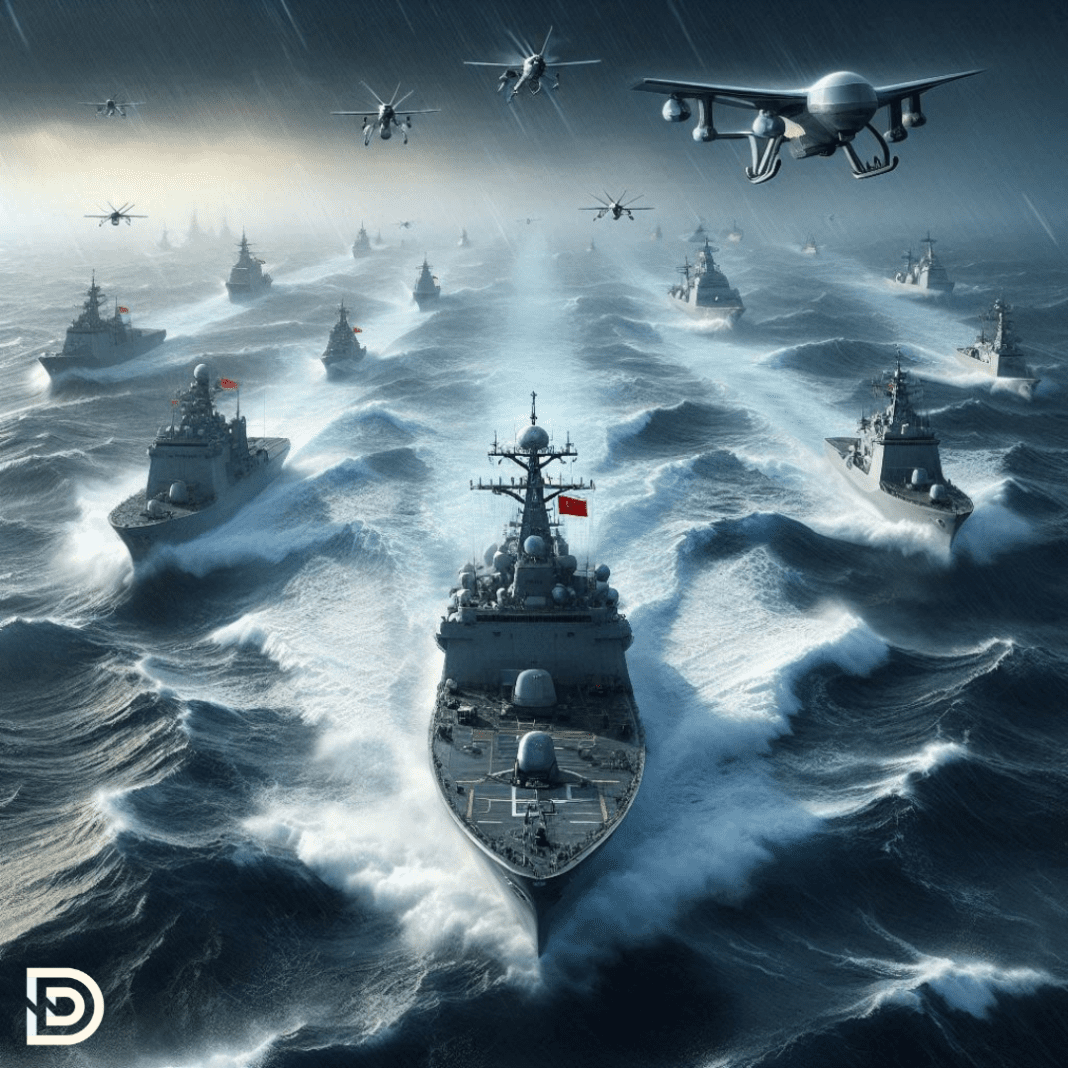Recent developments in the Indo-Pacific region have intensified concerns about geopolitical stability, as China’s naval activities near Australian waters continue to escalate. Reports indicate an increased presence of Chinese warships operating in international waters close to Australia’s northern coast. While these maneuvers remain within legal maritime boundaries, their frequency and scale suggest a more assertive Chinese stance. This shift aligns with Beijing’s broader naval expansion, as seen in the South China Sea and the Taiwan Strait, raising serious questions about regional security and Australia’s strategic response.
Implications for Australia’s National Security
As a key player in the Indo-Pacific, Australia has been closely monitoring China’s naval operations, particularly in the context of its evolving defense strategy. Experts have pointed out that China’s movements could be interpreted as a direct message to Canberra, particularly given Australia’s deepening defense ties with the United States and its participation in strategic alliances such as AUKUS and the Quad.
In response to these developments, Australia has pursued significant military upgrades, including the acquisition of nuclear-powered submarines and long-range strike capabilities. These efforts are intended to counterbalance Beijing’s growing influence. However, there is growing concern that an escalatory cycle could emerge, where both nations engage in increasingly assertive military posturing, leading to heightened tensions and the risk of miscalculation.
Broader Regional Dynamics and Strategic Considerations
China’s naval maneuvers have implications beyond Australia, affecting the broader Indo-Pacific security landscape. Other regional players, including Japan, India, and the United States, are closely watching Beijing’s maritime expansion and increasing their military presence in response. The potential for unintended clashes remains a key concern, as multiple nations operate in contested waters with heightened alertness, further complicating Indo-Pacific stability.
While China insists that its naval activities comply with international law and are purely defensive, regional actors view them as a demonstration of Beijing’s intent to challenge existing power structures. To mitigate risks, diplomatic engagement and confidence-building measures are necessary. However, with trust in short supply, military deterrence remains a crucial component of Australia’s strategy.
The Role of Long-Range Strike Capabilities
One of the critical discussions emerging from this situation revolves around the need for Australia to enhance its deterrence capabilities, particularly through long-range strike assets like the B-21 stealth bomber. Proponents argue that such an acquisition would significantly boost Australia’s ability to counter hostile naval movements. However, a key drawback is the increased reliance on the United States, as operating a B-21 fleet would require extensive logistical and intelligence support from Washington.
US Intelligence and Australia’s Surveillance Limitations
The tracking of Chinese naval task forces near Australian waters has also highlighted the critical role of intelligence gathering and surveillance in the Indo-Pacific. Currently, Australia lacks the necessary space-based assets to monitor foreign naval movements effectively. The US, however, possesses a sophisticated network of satellites capable of optical surveillance, radio frequency detection, and radar tracking. Without continued American assistance, maintaining situational awareness of Chinese military operations in the Indo-Pacific would be significantly more challenging for Australia.
A specific concern is whether Chinese nuclear-powered submarines are accompanying these warships. The Australian Defense Force’s limited capabilities in detecting such movements expose potential intelligence gaps. On the other hand, the possibility of a US nuclear submarine shadowing the Chinese task force remains an open question. In a wartime scenario, real-time intelligence on naval deployments across the Indo-Pacific would be critical, further emphasizing Australia’s dependence on American intelligence-sharing mechanisms.
The Future of the US-Australia Alliance and AUKUS
A broader issue emerging from this geopolitical tension is Australia’s long-term reliance on the United States as a strategic partner. While Australian defense officials often assert that the country will “never fight alone,” there is an underlying concern that Australia has not sufficiently prepared for scenarios in which it may need to act independently.
Uncertainty surrounding US commitments to Indo-Pacific security has intensified, particularly as political shifts in Washington create potential policy changes. Some analysts, including Hugh White, have long predicted that the US may eventually reduce its strategic presence in the Western Pacific due to the high cost of countering China. If this were to happen, Australia would be forced to reassess its defense posture, potentially accelerating efforts toward self-reliance in military capabilities.
The future of AUKUS and Australia’s defense investments also comes under scrutiny. The $368 billion plan to acquire nuclear-powered submarines was based on the assumption of sustained US engagement in the region. However, if US priorities shift, Australia must evaluate whether this is the most effective use of its defense budget. Additionally, questions arise about whether Australia can sustain such an advanced capability without continuous US technical and logistical support.
The Bottomline
As geopolitical tensions in the Indo-Pacific continue to rise, Australia faces critical decisions about its national security and defense strategy. The increasing presence of Chinese naval forces near Australian waters signals a shift in regional power dynamics, prompting Canberra to reconsider its long-term security partnerships and military investments. While alliances such as AUKUS and intelligence-sharing agreements with the US remain vital, Australia must also explore ways to bolster its independent defense capabilities. Strategic planning, intelligence enhancements, and military investments will be crucial in ensuring Australia is prepared for potential geopolitical shifts in the Indo-Pacific region.

